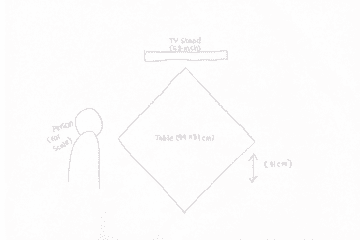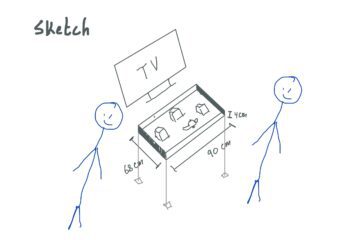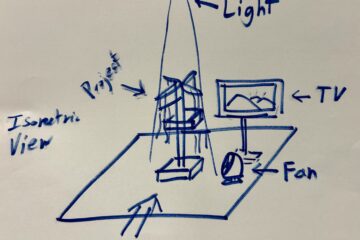With only a few days left before our desert installation, our project has a long way to go but is coming along. Thanks to Nelson from the Scene Shop, we were finally able to obtain the central component we had been needing : a pipe for the base of the sculpture (and on top of that, several wooden planks for laser cutting). One point is to note that we secured a copper pipe of the appropriate length (~2 meters) instead of the PVC pipe—copper might be a better material in terms of sturdiness.
For the branches of the sculpture, we came up with a design inspired by the ghaf tree, the national tree of the UAE. But once we started prototyping and attaching strips of wood to the servo motors, we realized that we would have to scale down the size (and subsequently details) of the branches for the servo to be able to actually handle their weight. We were able to come up with servo-manageable dimensions of the branches in the size—it is just a matter of coming up with a new branch design that works with these limitations.
We have also decided that we may laser cut and add a rotor-like panel of wood to the top of the sculpture. Our hopes are that this rotor may be able to spin around in response to the desert wind. This idea, and the laser cut design for it, is also in the works.
For the audio, we created a 1-minute and 20-second background track with an ethereal atmosphere. After soldering the large speaker to a wire, we got it up and running. The audio initially sounds distorted and unpleasant, but we resolved this by applying EQ to the tracks and removing certain low-end frequencies.
We also secured the servo motor to the pipe using zip ties and attached a laser-cut branch structure to it to test the movement. Watch this in the following video:
In terms of circuitry, we have been able to use the sensor to 1) detect things in front of it, 2) measure the distance between itself and presence, and 3) have the servo motor move at different ranges based on this distance data. We also found that connecting more than one servo to the M4 Express gives out an error—we thus decided to use the Adafruit PCA9685 instead to connect multiple servos. Since the maximum capacity for it is 16 servos, we decided that we could increase the amount of servos from 4 to 6 once we get the appropriate battery. The code for this is basically done, we can test it properly once we have the battery hooked to it.
After acquiring muslin and some net fabric, we were able to cut them into 2 meter long strips and start the dyeing process. We also chose to use only natural dyes to create a more harmonious color palette, even if the colors can be less reliable, to also add to the natural/human message of the artwork. Focusing on a red-yellow color scheme, we are staggering the dyes to create a range of different colors. For the red pigments, we were able to get avocado seeds from the Dining Hall, utilizing this scrap to get a red tone. We are also using beets and red onion peels to create other hues and mix them in to get variations. For the yellow tones we are using black tea and turmeric as the main pigments but combining them with various amounts of red dye to create an ombre. We are also leaving some work in the dye bath for longer to develop a stronger color, while taking some out earlier so that the different shades create more dimension. We have also kept some pieces undyed, just to add contrast. After the strips are dyed we are sewing them in a specific shape to create a sleeve like structure that can be slipped onto the branches. We will also stagger the fold so that they don’t overlap directly and create a more full look for the sculpture.


